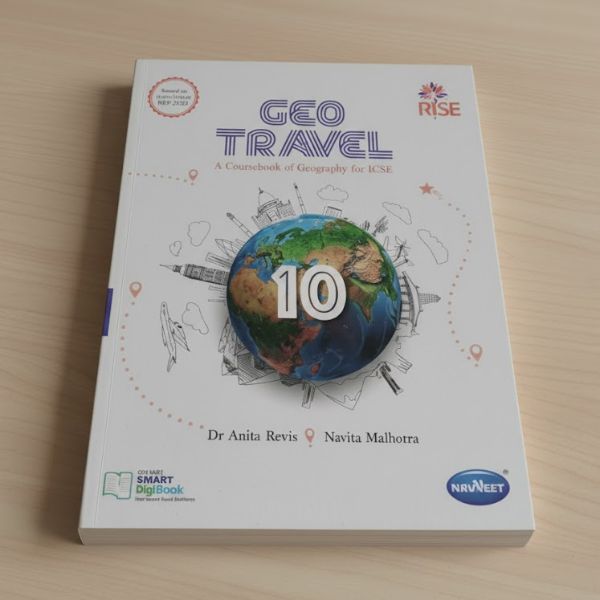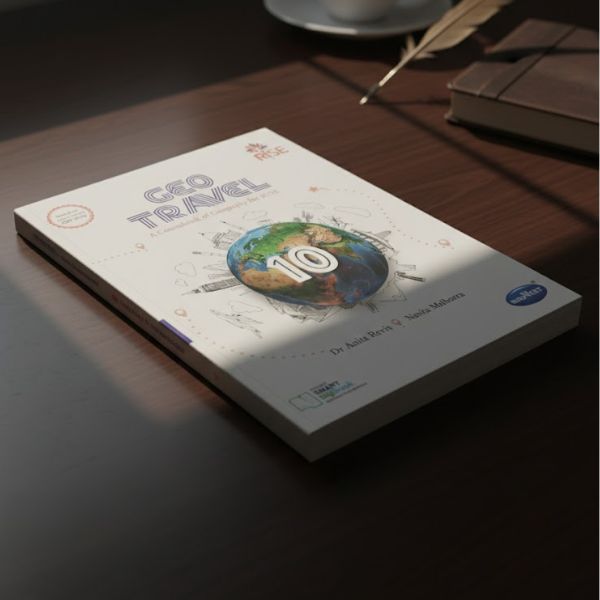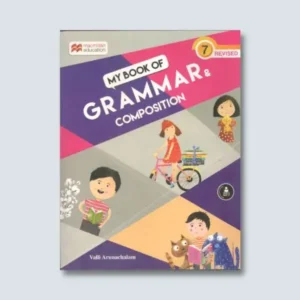The GEO TRAVEL Class 10 – Best ICSE Complete Geography Guide 2025 is a comprehensive textbook published by NAVNEET RISE, authored by Dr. Anita Revis & Navita Malhotra. It is specifically designed for the ICSE Class 10 curriculum, incorporating the latest NEP (National Education Policy) ideologies to focus on developing geographical skills for informed local, national, and international judgments.
Key Features of the Book
Based on the publisher’s description, the book’s core features are:
- ICSE Curriculum Alignment: It strictly follows the ICSE syllabus for middle and high school, catering to current educational needs.
- NEP 2020 Ideologies: Efforts have been made to integrate the latest NEP principles.
- Skill Development Focus: A primary goal is to develop geographical skills that enable students to make informed judgments at local, national, and international levels.
- Enriched Learning Material: Chapters are supplemented with:
- Bits of additional information.
- Visual aids like graphic organizers, flow charts, tables, diagrams, and pictures to make learning easier.
ICSE Class 10 Geography Syllabus Overview
The content of the GEO TRAVEL Class 10 guide is based on the ICSE syllabus, which is typically divided into two main parts:
Part I: Map Work (Topographical Maps & India Map Pointing)
This section focuses on practical interpretation skills:
- Interpretation of Topographical Maps:
- Locating features using four-figure and six-figure grid references.
- Understanding contours and contour intervals to identify landforms (steep/gentle slopes, hills, valleys, escarpments, etc.).
- Interpreting colour tints and conventional symbols.
- Calculating distance and area using different types of scales and marking directions.
- Identifying settlements, land use, communication routes, and drainage patterns.
- Map of India: Locating, marking, and naming major physical, climatic, and resource-related features on an outline map of India, including:
- Physical Features: Mountains, Peaks, Plateaus, Plains, and Rivers.
- Climate & Winds: Tropic of Cancer, Standard Meridian, and directions of the South West Monsoons and Western Disturbances.
- Resources: Distribution of Soils (Alluvial, Black, Red, Laterite) and Minerals (Iron, Coal, Oil).
- Cities and Population: Major cities and areas of dense/sparse population.
Part II: Geography of India (Theoretical Chapters)
This section covers the core theoretical chapters on India’s geography, which the book likely addresses in detail:
- Location, Extent and Physical Features (Through map only).
- Climate: Focuses on the Monsoon mechanism, distribution of temperature and rainfall, wind patterns, factors affecting climate, and the four seasons (Summer, Monsoon, Retreating Monsoon, Winter).
- Soil Resources: Types, distribution, composition, characteristics, and soil erosion (causes, prevention, and conservation).
- Natural Vegetation: Importance, types, distribution, and forest conservation.
- Water Resources: Sources, conservation (rainwater harvesting), and irrigation (importance and methods).
- Mineral and Energy Resources: Distribution and uses of specific minerals (Iron ore, Manganese, Copper, Bauxite), Conventional (Coal, Petroleum, Natural gas, Hydel power) and Non-conventional sources (Solar, Wind, Nuclear, Biogas).
- Agriculture: Importance, problems, reforms, types of farming, agricultural seasons, and specific requirements/distribution of major food and commercial crops.
- Manufacturing Industries: Importance, classification (Agro-based and Mineral-based), and distribution of key industries (Iron & Steel, Petrochemical, Electronics).
- Transport: Importance and modes (roadways, railways, airways, waterways) with their advantages and disadvantages.
- Waste Management: Impact of accumulation, need for management, and methods of safe disposal (segregation, dumping, composting, reducing, reusing, recycling).






Reviews
There are no reviews yet.